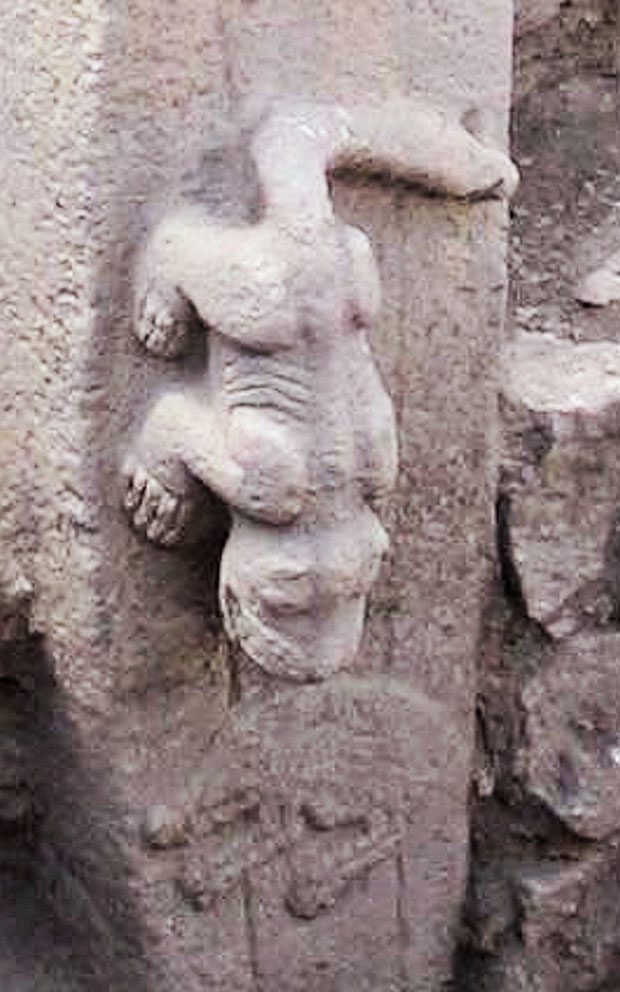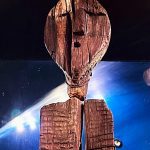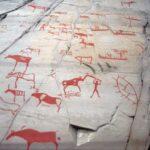
Göbekli Tepe is one of the most mysterious archaeological sites in the world. It’s located in southeastern Turkey and dates back to around 9600 BCE. This site is home to some of the oldest known temples and sculptures, which have fascinated researchers and historians for decades. The sculptures of Göbekli Tepe hold many secrets about ancient civilizations and their way of life.
Historical Context
Göbekli Tepe was discovered in the 1990s by Klaus Schmidt, a German archaeologist. Before its discovery, the area was largely unknown to the world. Schmidt and his team began excavations, revealing a complex of massive stone pillars arranged in circular formations. These pillars, some reaching over 16 feet in height, were adorned with intricate carvings.
The site is situated on a hilltop in southeastern Turkey, near the city of Şanlıurfa. This region is often referred to as the cradle of civilization, as it lies within the Fertile Crescent. Göbekli Tepe is dated to the Pre-Pottery Neolithic period, making it older than Stonehenge and the Great Pyramids of Giza. This ancient temple complex challenges previous notions of the development of human societies.
The discovery of Göbekli Tepe has revolutionized our understanding of early human civilization. Before its discovery, it was believed that complex societies and monumental architecture only developed after the advent of agriculture. However, Göbekli Tepe predates the known advent of agriculture, suggesting that complex social structures and religious practices existed much earlier.
The site’s importance cannot be overstated. Göbekli Tepe has provided invaluable insights into the spiritual and social lives of early humans. It has also raised many questions about the origins of religion and human civilization.
Description of the Sculptures
The sculptures at Göbekli Tepe are diverse and intricate, showcasing the artistry of ancient peoples. The most common motifs found on these sculptures are animals, which are carved in high relief on the stone pillars. These animals include lions, boars, foxes, and birds, each depicted with remarkable detail and precision.
In addition to animals, the pillars feature abstract symbols and humanoid figures. These carvings are believed to have held significant meanings for the people who created them. Some of the humanoid figures are depicted with hands and arms, often in unusual positions, which adds to the mystery of their purpose and symbolism.
The materials used for these sculptures were primarily limestone, which is abundant in the region. The craftsmen of Göbekli Tepe used flint tools to carve the intricate designs. Despite the primitive tools, the level of detail and craftsmanship is extraordinary. The carvings are deep and precise, indicating a high level of skill and artistry.
The techniques employed in creating these sculptures were sophisticated for their time. The stone pillars were first quarried and then transported to the site, where they were erected and carved. The entire process required considerable effort and coordination, suggesting a well-organized society with specialized labor.
Symbolism and Interpretation
The sculptures of Göbekli Tepe are rich in symbolism and have sparked numerous interpretations. Many researchers believe that the site served a religious or ritualistic purpose. The animal motifs may represent deities or spirits worshiped by the people of Göbekli Tepe. The presence of predator animals like lions and boars could symbolize protection or power.
The abstract symbols and humanoid figures add another layer of mystery. Some scholars suggest that these symbols might represent cosmological or spiritual concepts. The unusual positions of the humanoid figures’ arms and hands could indicate specific rituals or ceremonies performed at the site. However, the exact meanings remain speculative.
The socio-cultural implications of the sculptures are profound. They provide insights into the beliefs, practices, and social organization of the people who created them. The presence of such elaborate carvings suggests a complex society with a shared religious or cultural identity. This challenges the traditional view that early human societies were simple and primitive.
A comparative analysis with other contemporary sites reveals the uniqueness of Göbekli Tepe. While other Neolithic sites also feature carvings and sculptures, none match the scale and intricacy of Göbekli Tepe. The influence of Göbekli Tepe on later cultures is also a topic of interest. Some researchers believe that the site may have influenced the development of later civilizations in the region.
The Mystery and Controversy
Göbekli Tepe raises many unresolved questions about its purpose and the intentions of its creators. One of the biggest mysteries is why such a monumental site was built in the first place. Some theories suggest that it served as a pilgrimage site or a center for religious gatherings. Others propose that it was a place of social or political significance.
Scholarly debates about Göbekli Tepe are ongoing. Some archaeologists argue that the site was primarily religious, while others believe it had multiple functions. There is also debate about the society that built Göbekli Tepe. Were they hunter-gatherers, or had they already begun to practice early forms of agriculture? The lack of definitive answers keeps the academic community intrigued and divided.
Popular theories about Göbekli Tepe range from the plausible to the fantastical. Some suggest that the site was built by a lost civilization or with the help of advanced technologies. Others propose extraterrestrial involvement, though these ideas are widely dismissed by the scientific community. Despite the outlandish nature of some theories, they contribute to the site’s enigmatic allure.
The ongoing excavation and research at Göbekli Tepe continue to reveal new information, but many questions remain. As researchers uncover more of the site’s secrets, the mystery of Göbekli Tepe deepens. Each new discovery adds another piece to the puzzle, but the full picture is still far from complete.
Impact on Modern Understanding of Prehistoric Art
Göbekli Tepe has significantly changed how we perceive prehistoric art and architecture. Before its discovery, it was believed that such complex and monumental structures were beyond the capabilities of early human societies. Göbekli Tepe has demonstrated that our ancestors were capable of remarkable feats of engineering and artistry much earlier than previously thought.
The site has also influenced modern archaeological methods. The techniques used to study Göbekli Tepe have set new standards for the field. Researchers now employ advanced technologies like ground-penetrating radar and 3D scanning to uncover and analyze ancient sites. These methods have led to more accurate and detailed interpretations of prehistoric art and architecture.
Göbekli Tepe’s influence extends beyond archaeology. It has inspired artists, historians, and the general public, sparking a renewed interest in ancient civilizations. The site has become a symbol of human ingenuity and the enduring mystery of our origins. Its sculptures continue to captivate and inspire, reminding us of the rich cultural heritage of our ancestors.
The impact of Göbekli Tepe on our understanding of prehistoric art cannot be overstated. It has challenged long-held assumptions and opened new avenues of research. The site’s significance extends beyond its age and size; it represents a pivotal moment in human history, when our ancestors first began to express their beliefs and ideas through art and architecture.
Preservation and Tourism
Efforts to preserve Göbekli Tepe are crucial to ensuring its survival for future generations. The site faces numerous challenges, including natural erosion, environmental changes, and human activity. Preservation projects aim to protect the site from these threats while allowing for ongoing research and exploration.
Tourism plays a significant role in the preservation of Göbekli Tepe. Visitors provide valuable funding for conservation efforts and help raise awareness about the site’s importance. However, tourism also poses risks. Increased foot traffic can damage the delicate carvings and structures. Balancing the needs of preservation with the demands of tourism is a constant challenge.
Various measures have been implemented to protect Göbekli Tepe while accommodating tourists. Walkways and viewing platforms have been constructed to minimize direct contact with the site. Visitor numbers are carefully managed to reduce the impact on the site. Educational programs and guided tours help visitors understand the importance of preservation and the need for responsible tourism.
The local community also benefits from tourism. The influx of visitors has boosted the local economy and created job opportunities. However, there are concerns about the long-term sustainability of tourism. Ensuring that tourism remains beneficial for both the site and the community requires careful planning and management.
Conclusion
The sculptures of Göbekli Tepe offer a fascinating glimpse into the minds of our ancient ancestors. They reveal a complex and sophisticated society capable of remarkable artistic and architectural achievements. Despite the many mysteries that remain, Göbekli Tepe continues to captivate and inspire.
In summary, Göbekli Tepe is a site of immense historical and cultural significance. Its discovery has challenged our understanding of early human civilization and opened new avenues of research. The sculptures, with their intricate designs and profound symbolism, offer valuable insights into the beliefs and practices of ancient peoples.
Reflecting on the importance of Göbekli Tepe, it is clear that our journey to understand our past is far from over. Each new discovery brings us closer to unraveling the mysteries of this ancient site. As we continue to explore and learn, Göbekli Tepe will remain a beacon of human ingenuity and curiosity.
As archaeologist Klaus Schmidt once said, “Göbekli Tepe is the most important archaeological site in the world.” His words remind us of the enduring significance of this ancient wonder and the many secrets it still holds.
This article provides a comprehensive overview of the enigmatic sculptures of Göbekli Tepe, exploring their historical context, symbolism, and impact on modern understanding. With ongoing research and preservation efforts, we can look forward to uncovering even more about this fascinating site in the future.




